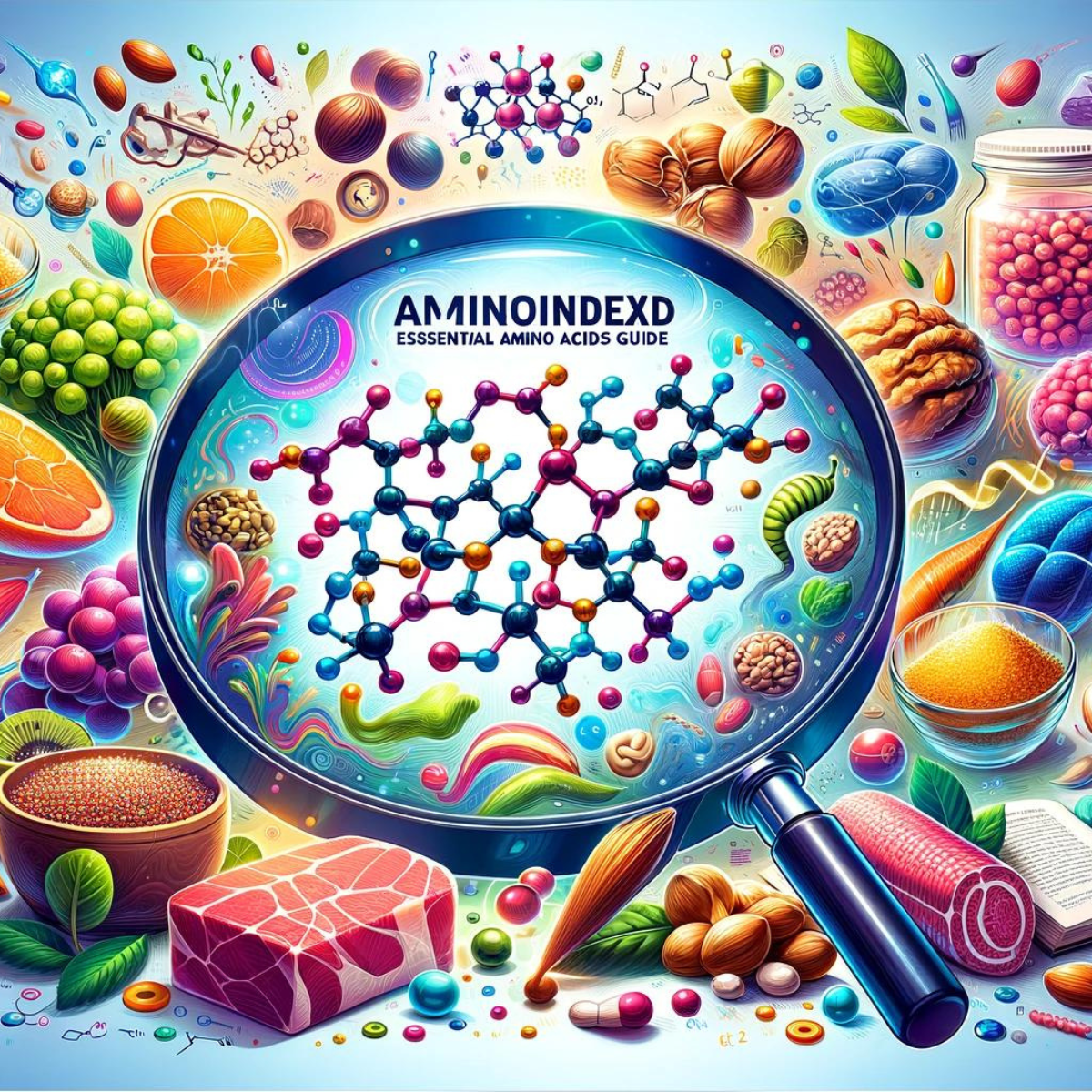สารบัญ
- อะไรทำให้เกิดโรคกระดูกพรุน?
- ปัจจัยที่มีอิทธิพลต่อการสูญเสียมวลกระดูก
- มาตรการป้องกัน: สิ่งที่คุณสามารถทำได้
- โภชนาการเพื่อเอาชนะโรคกระดูกพรุน
- การใช้ชีวิตกับโรคกระดูกพรุน: การจัดการและการรักษา
- การตรวจพบความหนาแน่นของกระดูกต่ำในระยะเริ่มต้น
- เรื่องราวส่วนตัวหรือคำรับรอง
- ความคิดเห็นของผู้เชี่ยวชาญ
- การสาธิตการออกกำลังกายเชิงป้องกัน
- งานวิจัยล่าสุด
- เครื่องมือโต้ตอบ
- คำถามที่พบบ่อย
- การสนับสนุนที่ครอบคลุมสำหรับการจัดการโรคกระดูกพรุน
- บทสรุป
- การปฏิเสธความรับผิดชอบ
- อ้างอิง
เมื่อเราอายุมากขึ้น กระดูกของเราอาจกลายเป็นศัตรูเงียบๆ ของเรา โดยความแข็งแรงและความหนาแน่นจะลดลงอย่างเงียบๆ โดยไม่มีสัญญาณที่เห็นได้ชัด โรคกระดูกพรุนเป็นภาวะที่กระดูกอ่อนแอลงและมีแนวโน้มที่จะหักได้ง่าย ซึ่งส่งผลกระทบต่อผู้คนทั่วโลกหลายล้านคน โดยเฉพาะผู้หญิงวัยหมดประจำเดือนและผู้สูงอายุ แม้ว่าจะค่อยๆ ดำเนินไปอย่างเงียบๆ แต่ผลกระทบของโรคกระดูกพรุนก็ชัดเจนมาก นั่นคือ มีความเสี่ยงต่อการเกิดกระดูกหักเพิ่มขึ้น เคลื่อนไหวได้น้อยลง และคุณภาพชีวิตลดลงอย่างมาก
การทำความเข้าใจเกี่ยวกับโรคกระดูกพรุนหมายถึงการรับรู้ถึงความเสี่ยงและเสริมสร้างพลังให้ตนเองเพื่อดำเนินการเชิงรุกเพื่อป้องกันและจัดการ ในบทความนี้ เราจะเจาะลึกถึงสาเหตุของโรคกระดูกพรุน ระบุปัจจัยด้านไลฟ์สไตล์ที่ส่งผลต่อสุขภาพกระดูก และสำรวจกลยุทธ์เชิงปฏิบัติสำหรับการป้องกันและจัดการ การเพิ่มความรู้เหล่านี้ให้กับตนเองจะทำให้กระดูกของคุณแข็งแรงขึ้นและลดความเสี่ยงของโรคร้ายแรงนี้
มาดูกันว่าสิ่งที่คุณจำเป็นต้องรู้และสิ่งที่คุณสามารถทำได้เพื่อรักษาสุขภาพกระดูกให้แข็งแรงคืออะไร
อะไรทำให้เกิดโรคกระดูกพรุน?
เผยตัวผู้ร้ายเบื้องหลังกระดูกหัก
โรคกระดูกพรุนอาจดูเหมือนเป็นผู้บุกรุกที่แอบซ่อนอยู่และทำลายความแข็งแรงของกระดูกของคุณไปอย่างเงียบๆ แต่ต้นกำเนิดของโรคนี้ไม่ใช่เรื่องลึกลับสำหรับวิทยาศาสตร์ หัวข้อนี้จะเจาะลึกลงไปถึงปฏิสัมพันธ์ที่น่าสนใจของปัจจัยต่างๆ ที่ทำให้เกิดโรคกระดูกพรุน โดยนำเสนอข้อมูลเชิงลึกที่ไม่เพียงแต่ให้ข้อมูลเท่านั้น แต่ยังสร้างกำลังใจอีกด้วย
ปัจจัยด้านอายุ: ความท้าทายที่ทันเวลา
เมื่อนาฬิกาเดินไปเรื่อยๆ ความท้าทายในการรักษาความหนาแน่นของกระดูกก็เพิ่มขึ้นตามไปด้วย กระดูกเป็นเนื้อเยื่อที่มีชีวิตซึ่งสลายตัวและสร้างใหม่ตลอดเวลา ร่างกายของคนหนุ่มสาวจะทำได้ดีในเรื่องนี้ แต่เมื่ออายุมากขึ้น ความสมดุลของเรื่องนี้ก็ลดลง เมื่อคุณอายุครบ 50 ปี กระดูกของคุณอาจสูญเสียความหนาแน่นเร็วกว่าที่สร้างขึ้น ทำให้เกิดภาวะกระดูกพรุนได้
ฮอร์โมนที่เลวร้าย: การขึ้นๆ ลงๆ ของเอสโตรเจน
ฮอร์โมนมีบทบาทสำคัญต่อสุขภาพกระดูก โดยเฉพาะในผู้หญิง เอสโตรเจนซึ่งเป็นฮอร์โมนที่ช่วยปกป้องกระดูกในช่วงวัยเจริญพันธุ์จะหมดลงเมื่อเข้าสู่วัยหมดประจำเดือน ส่งผลให้มวลกระดูกลดลงอย่างรวดเร็ว ผู้ชายก็ไม่มีภูมิคุ้มกันเช่นกัน ระดับฮอร์โมนเทสโทสเตอโรนที่ลดลงตามวัยก็ส่งผลต่อความหนาแน่นของกระดูกด้วยเช่นกัน
พิมพ์เขียวทางพันธุกรรม: เขียนไว้ในกระดูกของคุณ
หากแผนภูมิลำดับเครือญาติของคุณมีญาติที่เป็นโรคกระดูกพรุนหรือกระดูกหัก แผนภูมิลำดับเครือญาติของคุณอาจมีความเสี่ยงที่กระดูกจะบางลง การทำความเข้าใจเรื่องนี้ถือเป็นขั้นตอนสำคัญในการแทรกแซงและป้องกันในระยะเริ่มต้น
การเลือกไลฟ์สไตล์: คุณคือสิ่งที่คุณกิน... และทำ!
การสูบบุหรี่ทำให้กระดูกของคุณสูญเสียความแข็งแรง การดื่มแอลกอฮอล์มากเกินไปอาจขัดขวางความสามารถของร่างกายในการดูดซึมแคลเซียมซึ่งมีความสำคัญต่อสุขภาพกระดูก และหากคุณคิดว่าการออกกำลังกายคือการเดินจากโซฟาไปที่ตู้เย็น ถึงเวลาแล้วที่จะต้องคิดทบทวนกลยุทธ์การออกกำลังกายของคุณเสียใหม่ ร่างกายที่กระฉับกระเฉงช่วยให้กระดูกของคุณแข็งแรง
มุมมองด้านโภชนาการ: องค์ประกอบสำคัญของสุขภาพกระดูก
แคลเซียมและวิตามินดีเป็นสารอาหารสำคัญที่ช่วยให้กระดูกแข็งแรง แต่คุณควรได้รับสารอาหารเหล่านี้ทุกวัน การได้รับสารอาหารที่จำเป็นเหล่านี้ในปริมาณน้อยก็เหมือนกับการส่งกระดูกของคุณไปรบโดยไม่มีเกราะป้องกัน
อิทธิพลเงียบของโรคเรื้อรังและยา
โรคบางชนิดและยาบางชนิดอาจทำให้เกิดการสูญเสียมวลกระดูกได้โดยไม่คาดฝัน ไม่ว่าจะเป็นปัญหาต่อมไทรอยด์ โรคภูมิต้านทานตนเอง การใช้สเตียรอยด์ หรือการรักษามะเร็ง ผลกระทบต่อกระดูกของคุณอาจซ่อนอยู่แต่ก็สำคัญ
ในการสรุปการสำรวจสาเหตุของโรคกระดูกพรุนนี้ โปรดจำไว้ว่าความรู้ไม่ได้เป็นเพียงพลังเท่านั้น แต่ยังเป็นการป้องกันอีกด้วย ปัจจัยแต่ละประการที่เราค้นพบจะอธิบายถึง "เหตุผล" เบื้องหลังภาวะกระดูกบางนี้ และชี้ให้เห็นถึงมาตรการรับมือเชิงกลยุทธ์ที่คุณสามารถนำมาใช้ได้ทุกวัน โปรดติดตามขณะที่เราสำรวจกลยุทธ์เชิงปฏิบัติเพื่อเสริมสร้างกระดูกของคุณให้แข็งแรงเพื่อต่อต้านโรคกระดูกพรุนในหัวข้อถัดไป
ปัจจัยที่มีอิทธิพลต่อการสูญเสียมวลกระดูก
การนำทางกระแสน้ำใต้ดินที่กัดกร่อนความแข็งแรงของกระดูก
สุขภาพกระดูกไม่ได้หมายความถึงการหลีกเลี่ยงการแตกหรือหักเท่านั้น แต่ยังรวมถึงการทำความเข้าใจปัจจัยที่คอยกัดกร่อนความแข็งแรงของกระดูกเมื่อเวลาผ่านไปด้วย หัวข้อนี้จะเปิดเผยถึงปัจจัยที่มักถูกมองข้ามแต่เป็นปัจจัยสำคัญที่ทำให้กระดูกสูญเสียเร็วขึ้น ทำให้การตัดสินใจในแต่ละวันและสภาวะที่มองไม่เห็นกลายมาเป็นจุดสำคัญในการดูแลสุขภาพ
การขาดสารอาหาร: ปัญหาแคลเซียมและวิตามินดี
ลองนึกภาพกระดูกของคุณเป็นบัญชีธนาคารที่ต้องสะสมแคลเซียมอยู่ตลอดเวลา หากร่างกายขาดแคลเซียมและวิตามินดี ซึ่งเป็นสารอาหารตามธรรมชาติของร่างกาย กระดูกจะดึงแคลเซียมและวิตามินดีออกมามากกว่าที่สะสม ส่งผลให้เกิดภาวะขาดแคลเซียมและทำให้โครงสร้างกระดูกอ่อนแอลง การรับประทานอาหารที่มีผลิตภัณฑ์จากนม ผักใบเขียว และปลาในปริมาณน้อยอาจทำให้ร่างกายขาดแคลเซียมและวิตามินดีได้
กับดักการใช้ชีวิตแบบอยู่ประจำที่
กระดูกจะเจริญเติบโตได้ดีเมื่อมีแรงกดทับ การออกกำลังกาย โดยเฉพาะการออกกำลังกายที่ต้องรับน้ำหนัก เช่น การเดิน การวิ่ง หรือการยกของ จะทำให้ร่างกายสร้างมวลกระดูกเพิ่มขึ้น หากไม่ได้รับการกระตุ้น กระดูกอาจไม่สามารถส่งสัญญาณให้ร่างกายแข็งแรงขึ้นได้ ทำให้การใช้ชีวิตแบบอยู่ประจำที่กลายเป็นตัวขโมยมวลกระดูกไปโดยปริยาย
นิสัยที่เป็นพิษ: การสูบบุหรี่และการดื่มแอลกอฮอล์
การสูบบุหรี่และการดื่มแอลกอฮอล์มากเกินไปอาจส่งผลเสียต่อสุขภาพกระดูกได้ การสูบบุหรี่จะไปทำลายสมดุลของฮอร์โมนที่ปกป้องเนื้อเยื่อกระดูก ในขณะที่การดื่มแอลกอฮอล์มากเกินไปอาจทำให้สมดุลของแคลเซียมในร่างกายลดลง ลองนึกถึงพฤติกรรมเหล่านี้ว่าเป็นตัวร้ายในเรื่องราวสุขภาพกระดูกของคุณ
ปัจจัยทางการแพทย์: เมื่อการรักษาส่งผลต่อกระดูก
ยาและโรคบางชนิดมีผลข้างเคียงทำให้กระดูกบางลง สเตียรอยด์ซึ่งมักใช้รักษาปัญหาสุขภาพต่างๆ อาจทำให้กระดูกบางลงอย่างมากหากใช้เป็นเวลานาน โรคอื่นๆ เช่น โรคซีลิแอคหรือความไม่สมดุลของฮอร์โมนจะกัดกร่อนความแข็งแรงของกระดูกอย่างแอบๆ โดยมักจะไม่สังเกตเห็นจนกว่าจะเกิดความเสียหายอย่างรุนแรง
ฮอร์โมนที่ทำลายล้างมากกว่าเอสโตรเจนและเทสโทสเตอโรน
เมื่อฮอร์โมนไทรอยด์ไม่สมดุล อาจทำให้กระดูกสูญเสียเร็วขึ้นหรือยับยั้งการสร้างกระดูกได้ ในทำนองเดียวกัน โรคต่างๆ เช่น เบาหวานอาจทำให้การไหลเวียนของเลือดและระดับฮอร์โมนเปลี่ยนแปลงไป ส่งผลให้สุขภาพกระดูกแย่ลงในระยะยาว
ปัจจัยด้านสิ่งแวดล้อมและฤดูกาล
แม้แต่สภาพแวดล้อมก็มีส่วนเช่นกัน ตัวอย่างเช่น การขาดแสงแดดจะลดการสร้างวิตามินดีในผิวหนัง ซึ่งมีความสำคัญต่อการดูดซึมแคลเซียม การเปลี่ยนแปลงตามฤดูกาลยังส่งผลต่อการเลือกใช้ชีวิตที่เกี่ยวข้องกับอาหารและกิจกรรมทางกาย ซึ่งส่งผลทางอ้อมต่อสุขภาพกระดูก
ทำความเข้าใจผลกระทบของความเครียด
ความเครียดเรื้อรังกระตุ้นให้ร่างกายหลั่งฮอร์โมนคอร์ติซอล ซึ่งหากได้รับในปริมาณสูง อาจทำให้มวลกระดูกลดลง การจัดการความเครียดไม่เพียงแต่ส่งผลดีต่อจิตใจเท่านั้น แต่ยังมีความสำคัญต่อกระดูกด้วย
ปัจจัยเหล่านี้อาจดูเล็กน้อย แต่สามารถส่งผลต่อสุขภาพกระดูกได้อย่างมาก การรับรู้และปรับเปลี่ยนปัจจัยเหล่านี้ในชีวิตจะช่วยให้คุณดำเนินมาตรการเชิงรุกเพื่อรักษาและเพิ่มความหนาแน่นของกระดูกได้ ต่อไป เราจะมาสำรวจมาตรการป้องกันที่ได้ผลจริงและใช้งานได้จริง ซึ่งสามารถนำไปใช้ในชีวิตประจำวันเพื่อป้องกันกระดูกของคุณจากโรคกระดูกพรุนได้
มาตรการป้องกัน: สิ่งที่คุณสามารถทำได้
เสริมพลังการกระทำเพื่อปกป้องกระดูกของคุณ
การป้องกันโรคกระดูกพรุนไม่ใช่แค่การหลีกเลี่ยงผลลัพธ์ที่ไม่พึงประสงค์เท่านั้น แต่ยังเป็นการสร้างวิถีชีวิตที่ส่งเสริมสุขภาพกระดูกอีกด้วย หัวข้อนี้นำเสนอขั้นตอนปฏิบัติเพื่อเสริมสร้างกระดูกให้แข็งแรงและเสริมสร้างสุขภาพโดยรวมของคุณ
ออกกำลังกายแบบรับน้ำหนัก
การออกกำลังกายเป็นหัวใจสำคัญของสุขภาพกระดูก การออกกำลังกายแบบรับน้ำหนัก เช่น การเดิน การจ็อกกิ้ง การเต้น หรือการยกน้ำหนัก จะช่วยสร้างแรงกดบนกระดูก กระตุ้นให้กระดูกฟื้นฟูและแข็งแรงขึ้น ควรออกกำลังกายอย่างน้อย 30 นาทีเกือบทุกวันในสัปดาห์ นอกจากกระดูกจะแข็งแรงขึ้นแล้ว ยังช่วยปรับปรุงอารมณ์และสุขภาพโดยรวมอีกด้วย
แคลเซียมและวิตามินดี: คู่หูสุดไดนามิก
แคลเซียมและวิตามินดีมีความสำคัญต่อการรักษาความแข็งแรงของกระดูก แคลเซียมเป็นส่วนประกอบสำคัญของร่างกาย ในขณะที่วิตามินดีช่วยให้ร่างกายสามารถดูดซึมและใช้ประโยชน์จากแคลเซียมได้อย่างมีประสิทธิภาพ รับประทานอาหารที่มีแคลเซียมสูง เช่น ผลิตภัณฑ์จากนม อัลมอนด์ บรอกโคลี และอาหารเสริม แสงแดดเป็นแหล่งวิตามินดีที่ดีที่สุด แต่การเสริมวิตามินดีอาจจำเป็นขึ้นอยู่กับสถานที่และไลฟ์สไตล์ของคุณ
รักษาสมดุลการรับประทานอาหาร
การรับประทานอาหารที่มีสารอาหารสูงจะส่งผลดีต่อสุขภาพกระดูกมากกว่าแค่แคลเซียมและวิตามินดี แมกนีเซียม โพแทสเซียม วิตามินเคและซียังมีบทบาทในการเผาผลาญของกระดูกอีกด้วย ควรรับประทานผลไม้ ผัก โปรตีนไม่ติดมัน และธัญพืชไม่ขัดสีหลากหลายชนิดเพื่อให้ได้รับสารอาหารที่จำเป็นเหล่านี้อย่างสมดุล
จำกัดสารที่ทำลายกระดูก
ลดการบริโภคคาเฟอีนและเกลือ ซึ่งอาจขัดขวางการดูดซึมแคลเซียมหากบริโภคมากเกินไป ในทำนองเดียวกัน ควรจำกัดการดื่มแอลกอฮอล์และเลิกสูบบุหรี่ เนื่องจากทั้งสองอย่างนี้ทำให้โครงสร้างกระดูกอ่อนแอลงในระยะยาว
การคัดกรองและประเมินผลเป็นประจำ
การตรวจพบภาวะกระดูกพรุนในระยะเริ่มต้นถือเป็นสิ่งสำคัญ หากคุณมีความเสี่ยงเนื่องจากอายุ ประวัติครอบครัว หรือปัจจัยอื่นๆ การทดสอบความหนาแน่นของกระดูกเป็นประจำ (การสแกน DEXA) สามารถช่วยตรวจพบโรคกระดูกพรุนได้ก่อนที่จะเกิดกระดูกหัก ปรึกษากับผู้ให้บริการดูแลสุขภาพของคุณว่าควรเริ่มตรวจเมื่อใดและควรตรวจบ่อยเพียงใดตามโปรไฟล์สุขภาพของคุณ
ระวังการใช้ยาของคุณ
ระวังยาที่อาจส่งผลต่อความหนาแน่นของกระดูก เช่น คอร์ติโคสเตียรอยด์และยาต้านอาการชักบางชนิด หากคุณกำลังรับประทานยาดังกล่าวอยู่ ควรปรึกษาแพทย์เกี่ยวกับผลกระทบที่อาจเกิดขึ้นต่อกระดูก รวมถึงทางเลือกอื่นๆ หรือมาตรการป้องกันอื่นๆ
รับข้อมูลและมีส่วนร่วม
ความรู้คือพลัง คอยติดตามข้อมูลล่าสุดเกี่ยวกับการวิจัยและคำแนะนำด้านสุขภาพกระดูก การมีส่วนร่วมกับกลุ่มสนับสนุนหรือเวิร์กช็อปเชิงการศึกษาสามารถให้ข้อมูลเชิงลึกและกำลังใจเพิ่มเติมได้
การจัดการความเครียด
ความเครียดเรื้อรังอาจส่งผลเสียต่อสุขภาพกระดูกเนื่องจากระดับคอร์ติซอลที่สูงเกินไป แนะนำให้ทำกิจวัตรประจำวันเพื่อลดความเครียด เช่น การทำสมาธิ โยคะ หรือการผ่อนคลายเป็นประจำ
การบูรณาการมาตรการป้องกันเหล่านี้เข้ากับไลฟ์สไตล์ของคุณ ไม่เพียงแต่จะช่วยป้องกันภาวะกระดูกพรุนเท่านั้น แต่ยังเป็นการเสริมสร้างความแข็งแรงให้กับร่างกายไปตลอดชีวิตอีกด้วย ต่อไปนี้ เราจะมาสำรวจกลยุทธ์ด้านโภชนาการเพื่อเสริมสร้างสุขภาพกระดูกและต่อสู้กับภาวะกระดูกพรุนอย่างมีประสิทธิภาพ
โภชนาการเพื่อเอาชนะโรคกระดูกพรุน
การบำรุงกระดูกของคุณเพื่อสุขภาพที่ดีที่สุด
โภชนาการมีบทบาทสำคัญในการรักษาและเสริมสร้างสุขภาพกระดูก การรับประทานอาหารที่มีสารอาหารครบถ้วนในปริมาณที่เหมาะสมจะช่วยลดความเสี่ยงของโรคกระดูกพรุนและส่งเสริมสุขภาพโดยรวมได้อย่างมาก หัวข้อนี้จะเน้นถึงกลยุทธ์ด้านโภชนาการที่สำคัญเพื่อเสริมสร้างกระดูกและป้องกันโรคกระดูกพรุน
แคลเซียม: ตัวช่วยสร้างกระดูก
แคลเซียมเป็นรากฐานสำคัญของกระดูกที่แข็งแรง ผู้ใหญ่โดยทั่วไปต้องการแคลเซียมประมาณ 1,000 ถึง 1,200 มิลลิกรัมต่อวัน โดยสามารถรับแคลเซียมได้จากอาหารและอาหารเสริม อาหารที่มีแคลเซียมสูง ได้แก่:
- ผลิตภัณฑ์จากนม เช่น นม โยเกิร์ต และชีส
- ผักใบเขียว เช่น ผักคะน้า และผักโขม
- อาหารเสริม เช่น น้ำส้ม ซีเรียล และนมพืช
- ปลาที่มีกระดูกที่กินได้ เช่น ปลาซาร์ดีนและปลาแซลมอนกระป๋อง
วิตามินดี: วิตามินจากแสงแดด
วิตามินดีมีความจำเป็นต่อการดูดซึมแคลเซียมในกระดูก แม้ว่าแสงแดดจะเป็นแหล่งธรรมชาติ แต่หลายคนก็ต้องการวิตามินดีเพิ่มเติม โดยเฉพาะในสภาพอากาศที่มีแสงแดดน้อยหรือในช่วงฤดูหนาว แหล่งอาหาร ได้แก่:
- ปลาที่มีไขมัน เช่น ปลาแซลมอน ปลาแมคเคอเรล และปลาทูน่า
- ไข่แดง
- อาหารเสริม เช่น นมและซีเรียล
พิจารณาการเสริมอาหารหากการรับประทานอาหารและการได้รับแสงแดดไม่เพียงพอ
แมกนีเซียมและโพแทสเซียม: ฮีโร่ที่ไม่มีใครรู้จัก
แมกนีเซียมและโพแทสเซียมมีส่วนช่วยในการสร้างแคลเซียมในกระดูกและช่วยรักษาความหนาแน่นของกระดูก รวมสารอาหารเหล่านี้ไว้ในอาหารของคุณโดย:
- ถั่วและเมล็ดพืช โดยเฉพาะอัลมอนด์และเมล็ดทานตะวัน
- พืชตระกูลถั่วและธัญพืชไม่ขัดสี
- ผลไม้ เช่น กล้วยและอะโวคาโด
- ผัก เช่น มันฝรั่ง และมันเทศ
วิตามินเคและซี: บทบาทเสริม
วิตามินเคมีบทบาทสำคัญในการสร้างโปรตีนที่ยึดแคลเซียมในกระดูก ในขณะที่วิตามินซีมีความสำคัญต่อการสังเคราะห์คอลลาเจนซึ่งเป็นส่วนหนึ่งของเมทริกซ์ของกระดูก แหล่งอาหารที่อุดมไปด้วยวิตามินเค ได้แก่:
- ผักใบเขียว เช่น ผักโขม คะน้า และบร็อคโคลี่ เพื่อรับวิตามินเค
- ผลไม้รสเปรี้ยว สตรอเบอร์รี่ และพริก สำหรับวิตามินซี
โปรตีน: โครงสร้างของกระดูก
การได้รับโปรตีนในปริมาณที่เพียงพอมีความสำคัญต่อสุขภาพกระดูก แต่การได้รับโปรตีนในปริมาณที่มากเกินไปอาจทำให้สูญเสียแคลเซียมได้ ควรเลือกแหล่งโปรตีนที่หลากหลาย เช่น:
- เนื้อสัตว์ไม่ติดมัน
- สัตว์ปีกและปลา
- ถั่วและพืชตระกูลถั่ว
- ผลิตภัณฑ์จากถั่วเหลือง เช่น เต้าหู้ และเทมเป้
การรับประทานอาหารอย่างมีสติ: ลดปัจจัยทำลายกระดูก
จำกัดการรับประทานสารที่สามารถทำให้มวลกระดูกลดลง เช่น:
- เกลือมากเกินไปอาจทำให้สูญเสียแคลเซียมผ่านไตมากขึ้น
- ระดับคาเฟอีนที่สูงซึ่งอาจรบกวนการดูดซึมแคลเซียม
- แอลกอฮอล์ ซึ่งส่งผลต่อสมดุลของแคลเซียมและการผลิตฮอร์โมนสร้างกระดูก
การให้ความสำคัญกับการรับประทานอาหารที่มีสารอาหารที่สำคัญเหล่านี้และใส่ใจต่อปัจจัยที่ก่อให้เกิดอันตรายอาจช่วยเพิ่มสุขภาพกระดูกและลดความเสี่ยงต่อโรคกระดูกพรุนได้อย่างมาก แนวทางโภชนาการเชิงรุกนี้ไม่ได้หมายความถึงการรับประทานอาหารเท่านั้น แต่ยังรวมถึงการบำรุงกระดูกทุกส่วนในร่างกายเพื่ออนาคตที่แข็งแรงและมีสุขภาพดียิ่งขึ้น ต่อไปนี้ เราจะหารือเกี่ยวกับกลยุทธ์การจัดการที่มีประสิทธิผลสำหรับผู้ที่ได้รับการวินิจฉัยว่าเป็นโรคกระดูกพรุน
การใช้ชีวิตกับโรคกระดูกพรุน: การจัดการและการรักษา
กลยุทธ์เพื่อวันพรุ่งนี้ที่แข็งแกร่งยิ่งขึ้น
การใช้ชีวิตกับโรคกระดูกพรุนไม่ได้หมายความว่าต้องยอมรับกับความเปราะบาง ด้วยกลยุทธ์การจัดการและการรักษาที่ถูกต้อง บุคคลต่างๆ สามารถใช้ชีวิตที่กระฉับกระเฉงและสมบูรณ์พร้อมทั้งลดความเสี่ยงของการเกิดกระดูกหักได้ หัวข้อนี้จะอธิบายวิธีปฏิบัติในการจัดการกับโรคกระดูกพรุนและรักษาคุณภาพชีวิต
การรักษาทางการแพทย์เพื่อเสริมสร้างกระดูก
มีการใช้ยาหลายชนิดที่สามารถช่วยชะลอการสูญเสียมวลกระดูกหรือแม้แต่เพิ่มความแข็งแรงของกระดูกได้:
- โดยทั่วไปแล้ว บิสฟอสโฟเนต จะถูกกำหนดให้ใช้เพื่อป้องกันการสูญเสียความหนาแน่นของกระดูก
- Denosumab เป็นยาฉีดปีละ 2 ครั้งเพื่อช่วยสร้างมวลกระดูก
- สารปรับเปลี่ยนตัวรับเอสโตรเจนแบบเลือกสรร (SERMs) เช่น raloxifene เลียนแบบผลดีของเอสโตรเจนต่อความหนาแน่นของกระดูกโดยไม่มีความเสี่ยงบางอย่างที่เกี่ยวข้องกับการบำบัดด้วยฮอร์โมน
- แคลซิโทนิน ช่วยควบคุมระดับแคลเซียมและการเผาผลาญของกระดูก
- ฮอร์โมนพาราไทรอยด์แอนะล็อก เช่น เทอริพาราไทด์ จะช่วยกระตุ้นการเจริญเติบโตของกระดูกในผู้ที่มีภาวะกระดูกพรุนรุนแรง
อาหารเสริม: เติมเต็มช่องว่างทางโภชนาการ
การเสริมแคลเซียมและวิตามินดีในอาหารถือเป็นสิ่งสำคัญ โดยเฉพาะอย่างยิ่งเมื่อปริมาณอาหารที่ได้รับไม่เพียงพอ ควรปรึกษาแพทย์เกี่ยวกับขนาดยาที่เหมาะสมกับความต้องการของคุณ โดยพิจารณาจากปัจจัยต่างๆ เช่น อายุ เพศ และความหนาแน่นของกระดูกที่มีอยู่
การออกกำลังกาย: กำหนดเองและสม่ำเสมอ
การออกกำลังกายมีความจำเป็น ไม่เพียงแต่เพื่อป้องกันโรคกระดูกพรุนเท่านั้น แต่ยังเพื่อควบคุมโรคด้วย เน้นที่:
- การออกกำลังกายที่ต้องใช้แรงรับน้ำหนัก เช่น การเดินหรือจ็อกกิ้ง จะช่วยกระตุ้นการเจริญเติบโตของกระดูก
- การฝึกความแข็งแกร่ง เพื่อสร้างมวลกล้ามเนื้อและความแข็งแรงของกระดูก
- การออกกำลังกายเพื่อทรงตัว เช่น ไทชิหรือโยคะ จะช่วยลดความเสี่ยงในการหกล้มได้โดยการปรับปรุงท่าทางและการประสานงาน
การปรับเปลี่ยนไลฟ์สไตล์: ปลอดภัยและยั่งยืน
การปรับเปลี่ยนไลฟ์สไตล์ของคุณสามารถส่งผลต่อความสามารถในการใช้ชีวิตร่วมกับโรคกระดูกพรุนได้อย่างมาก:
- เลิกสูบบุหรี่ และ จำกัดการดื่มแอลกอฮอล์ เพื่อให้กระดูกแข็งแรง
- ป้องกันบ้านของคุณจากการล้ม โดยกำจัดอันตรายจากการสะดุด ติดตั้งราวจับในห้องน้ำ และจัดให้มีแสงสว่างเพียงพอเพื่อป้องกันการล้ม
- รักษาน้ำหนักให้อยู่ในเกณฑ์ปกติ เนื่องจากการมีน้ำหนักต่ำกว่าเกณฑ์จะเพิ่มความเสี่ยงต่อการเกิดกระดูกหักได้ เนื่องจากมีไขมันสะสมน้อยลงและมวลกล้ามเนื้อลดลง
การติดตามและให้คำปรึกษาเป็นประจำ
ติดต่อกับผู้ให้บริการดูแลสุขภาพของคุณอย่างสม่ำเสมอเพื่อติดตามความหนาแน่นของกระดูกและปรับการรักษาตามความจำเป็น การดูแลเอาใจใส่สุขภาพของคุณอย่างเป็นเชิงรุกสามารถช่วยจัดการภาวะนี้ได้อย่างมีประสิทธิภาพ
เครือข่ายสนับสนุนและการศึกษา
เข้าร่วมกลุ่มสนับสนุนและค้นหาแหล่งข้อมูลทางการศึกษาเพื่อให้ทราบข้อมูลเกี่ยวกับการรักษาและกลยุทธ์ใหม่ๆ ในการใช้ชีวิตกับโรคกระดูกพรุน การเชื่อมต่อกับผู้อื่นที่เผชิญกับความท้าทายที่คล้ายคลึงกันสามารถให้การสนับสนุนทางอารมณ์และคำแนะนำที่เป็นประโยชน์ได้เช่นกัน
การบูรณาการกลยุทธ์การจัดการและการรักษาเหล่านี้เข้ากับกิจวัตรประจำวันของคุณ จะช่วยให้คุณควบคุมโรคกระดูกพรุน ลดความเสี่ยงของการเกิดกระดูกหัก และรักษาการใช้ชีวิตที่กระฉับกระเฉงและมีสุขภาพดีได้ ในส่วนถัดไป เราจะมาสำรวจว่าการตรวจพบมวลกระดูกต่ำในระยะเริ่มต้นสามารถป้องกันโรคกระดูกพรุนและกระดูกหักรุนแรงได้อย่างไร
การตรวจพบความหนาแน่นของกระดูกต่ำในระยะเริ่มต้น
สัญญาณเตือนล่วงหน้าสำหรับการป้องกันเชิงรุก
การระบุโรคกระดูกพรุนก่อนที่จะเกิดกระดูกหักถือเป็นสิ่งสำคัญในการจัดการและป้องกันภาวะแทรกซ้อนร้ายแรง หัวข้อนี้จะอธิบายเกี่ยวกับความสำคัญของการตรวจพบความหนาแน่นของกระดูกต่ำในระยะเริ่มต้น พร้อมทั้งให้คำแนะนำเกี่ยวกับการจดจำสัญญาณต่างๆ และทำความเข้าใจเครื่องมือวินิจฉัยที่มีอยู่
ทำความเข้าใจสัญญาณเงียบ
โดยทั่วไปโรคกระดูกพรุนจะไม่แสดงอาการที่ชัดเจนจนกว่ากระดูกจะหัก แต่ก็มีสัญญาณอื่นๆ ที่ไม่ชัดเจนซึ่งอาจบ่งบอกว่าความหนาแน่นของกระดูกลดลง:
- การสูญเสียความสูงอย่างค่อยเป็นค่อยไปเมื่อเวลาผ่านไปอันเนื่องมาจากการกดทับกระดูกสันหลัง
- การเปลี่ยนแปลงที่เห็นได้ชัดในท่าทาง เช่น การหลังค่อมหรือหลังค่อม
- อาการปวดที่กระดูกสันหลังหรือกล้ามเนื้อแบบกะทันหันและไม่คาดคิด อาจบ่งบอกถึงกระดูกหักที่ยังไม่ทราบสาเหตุ
บทบาทของการตรวจความหนาแน่นของกระดูก (DEXA Scans)
มาตรฐานทองคำสำหรับการวินิจฉัยโรคกระดูกพรุนคือการสแกนด้วยเครื่อง Dual-Energy X-ray Absorptiometry (DEXA) การทดสอบแบบไม่เจ็บปวดนี้จะวัดความหนาแน่นของกระดูกในบริเวณสำคัญของร่างกาย โดยทั่วไปคือบริเวณสะโพกและกระดูกสันหลัง และเปรียบเทียบกับความหนาแน่นของกระดูกที่คาดว่าจะเกิดขึ้นในผู้ใหญ่วัยหนุ่มสาวที่แข็งแรง ผลลัพธ์จะช่วยกำหนดระดับการสูญเสียมวลกระดูกและความเสี่ยงของการเกิดกระดูกหัก
ใครบ้างที่ควรได้รับการทดสอบ?
แนวทางแนะนำว่าผู้หญิงทุกคนที่อายุมากกว่า 65 ปีและผู้ชายที่อายุมากกว่า 70 ปีควรตรวจความหนาแน่นของกระดูก คนอายุน้อยอาจจำเป็นต้องตรวจหากมีปัจจัยเสี่ยง เช่น:
- ประวัติครอบครัวเป็นโรคกระดูกพรุน
- การใช้สเตียรอยด์เป็นเวลานาน
- โรคบางชนิดที่ส่งผลต่อสุขภาพกระดูก เช่น โรคไขข้ออักเสบรูมาตอยด์ หรือโรคไตเรื้อรัง
- ประวัติการสูบบุหรี่หรือดื่มแอลกอฮอล์ปริมาณมาก
การติดตามการเปลี่ยนแปลงในช่วงเวลาต่างๆ
สำหรับผู้ที่ได้รับการวินิจฉัยว่าเป็นโรคกระดูกพรุนหรือมีความหนาแน่นของกระดูกต่ำ การตรวจ DEXA ติดตามผลอย่างสม่ำเสมอถือเป็นสิ่งสำคัญเพื่อติดตามประสิทธิผลของกลยุทธ์การรักษาและปรับใช้ตามความจำเป็น โดยทั่วไป แนะนำให้ตรวจทุก 1-2 ปี ขึ้นอยู่กับความรุนแรงของอาการและแนวทางการรักษา
เครื่องมือวินิจฉัยเพิ่มเติม
แม้ว่าการสแกน DEXA จะเป็นวิธีที่นิยมใช้กันมากที่สุด แต่การทดสอบอื่นๆ ยังสามารถช่วยในการประเมินสุขภาพกระดูกได้อีกด้วย:
- การถ่ายภาพด้วยคอมพิวเตอร์เชิงปริมาณ (QCT) ใช้เป็นหลักสำหรับการวัดกระดูกสันหลัง โดยให้ภาพที่มีรายละเอียดและการวัดแยกกันสำหรับกระดูกพรุนและกระดูกแข็ง
- อัลตราซาวนด์ส้นเท้า : การทดสอบที่ไม่รุนแรงแต่พบได้น้อย โดยบ่งชี้ถึงปัญหาความหนาแน่นของกระดูก
การบูรณาการเครื่องมือการประเมินความเสี่ยง
เครื่องมือและเครื่องคำนวณออนไลน์หลายตัว เช่น เครื่องมือ FRAX สามารถคาดการณ์ความเสี่ยงในการเกิดกระดูกหักภายใน 10 ปีข้างหน้าได้โดยอาศัยความหนาแน่นของกระดูกในปัจจุบันและปัจจัยอื่นๆ เช่น อายุ เพศ และประวัติการรักษา เครื่องมือเหล่านี้สามารถช่วยให้คุณและผู้ให้บริการดูแลสุขภาพของคุณตัดสินใจเกี่ยวกับมาตรการป้องกันหรือการรักษาได้
การเฝ้าระวังและดำเนินการเชิงรุกด้วยการตรวจคัดกรองเป็นประจำและตระหนักถึงสัญญาณเล็กๆ น้อยๆ ของการสูญเสียมวลกระดูก จะช่วยให้คุณดำเนินขั้นตอนสำคัญในการดูแลสุขภาพกระดูกได้อย่างมีประสิทธิภาพ การตรวจพบแต่เนิ่นๆ มีความสำคัญอย่างยิ่งในการป้องกันการลุกลามของโรคกระดูกพรุนและรักษาการใช้ชีวิตที่แข็งแรงและกระฉับกระเฉง
เรื่องราวส่วนตัวหรือคำรับรอง
เสียงที่แท้จริง ประสบการณ์ที่แท้จริง
เรื่องราวส่วนตัวและคำรับรองต่างๆ จะให้ข้อมูลเชิงลึกอันทรงพลังเกี่ยวกับผลกระทบในชีวิตจริงของโรคกระดูกพรุน พร้อมทั้งให้แรงบันดาลใจและคำแนะนำที่เป็นประโยชน์สำหรับผู้ที่กำลังเผชิญกับโรคนี้ ในส่วนนี้จะมีเรื่องราวส่วนตัวที่เน้นถึงความท้าทาย กลยุทธ์ และความสำเร็จที่เกี่ยวข้องกับการใช้ชีวิตกับโรคกระดูกพรุน
การเดินทางของมาเรีย: การเรียนรู้และการปรับตัว
“หลังจากที่ได้รับการวินิจฉัยโรคตอนอายุ 62 ปี ตอนแรกฉันรู้สึกตกใจและกลัวมาก ฉันไม่รู้อะไรเกี่ยวกับโรคกระดูกพรุนมากนัก ยกเว้นว่าแม่ของฉันเป็นโรคนี้ แต่ฉันตัดสินใจใช้ความกลัวนั้นเป็นแรงบันดาลใจแทนที่จะปล่อยให้ความกลัวมาจำกัดความ ฉันเริ่มต้นด้วยการเปลี่ยนแปลงเล็กๆ น้อยๆ เช่น เพิ่มปริมาณแคลเซียมที่รับประทานและเดินทุกวัน เมื่อเวลาผ่านไป การเปลี่ยนแปลงเหล่านี้ก็กลายมาเป็นส่วนหนึ่งของชีวิตฉัน การสแกนครั้งล่าสุดของฉันแสดงให้เห็นว่ามวลกระดูกดีขึ้นเล็กน้อย และฉันรู้สึกแข็งแรงขึ้นกว่าเดิม คำแนะนำของฉันคือ เริ่มต้นทีละเล็กทีละน้อย สม่ำเสมอ และอย่าประเมินพลังของชุมชนที่คอยสนับสนุนต่ำเกินไป”
เรื่องราวของจอห์น: การเอาชนะอุปสรรค
“ฉันเป็นคนกระตือรือร้นอยู่เสมอแต่ไม่ค่อยใส่ใจเรื่องอาหารการกินหรือการออกกำลังกายเพื่อสุขภาพกระดูกเท่าไหร่นัก เมื่อฉันหักข้อมือขณะเล่นบาสเก็ตบอล ฉันจึงถูกวินิจฉัยว่าเป็นโรคกระดูกพรุน แม้จะเป็นเรื่องยากแต่ฉันก็ได้เรียนรู้ว่าการดูแลสุขภาพอย่างจริงจังเป็นสิ่งที่ไม่สามารถต่อรองได้ ฉันได้นำการฝึกความแข็งแรงเข้ามาเป็นส่วนหนึ่งของกิจวัตรประจำวันและให้ความสำคัญกับโภชนาการมากขึ้น ผลการทดสอบความหนาแน่นของกระดูกดีขึ้นเล็กน้อยทุกปี และฉันก็ป้องกันอาการบาดเจ็บเพิ่มเติมได้”
ข้อคิดของลินดา: การตระหนักรู้และการป้องกัน
“พี่สาวทั้งสองคนของฉันเป็นโรคกระดูกพรุน ดังนั้น ฉันจึงรู้ว่าความเสี่ยงของฉันนั้นสูง ฉันเริ่มต้นด้วยการป้องกัน เช่น โยคะ รับประทานอาหารที่มีผักใบเขียวและผลิตภัณฑ์จากนมเป็นหลัก นอกจากนี้ ฉันยังเข้ารับการตรวจ DEXA เป็นประจำเพื่อตรวจวัดความหนาแน่นของกระดูก จนถึงตอนนี้ ฉันก็สบายดี และฉันเชื่อว่าการลงมือทำตั้งแต่เนิ่นๆ เป็นสิ่งสำคัญ สำหรับผู้ที่มีความเสี่ยง อย่ารอให้เกิดกระดูกหักก่อนจึงค่อยลงมือทำ การป้องกันคือยาที่ดีที่สุด”
ข้อคิดเห็นของอาเหม็ด: การสนับสนุนของครอบครัว
“การวินิจฉัยของฉันเป็นเรื่องน่าประหลาดใจหลังจากที่ฉันล้มเล็กน้อยจนกระดูกหัก การเดินทางนั้นไม่ง่ายเลย โดยเฉพาะการปรับตัวกับความกลัวที่จะล้มอีกครั้ง แต่ด้วยการสนับสนุนของครอบครัว ฉันจึงสามารถเปลี่ยนแปลงวิถีชีวิตได้อย่างมาก เราเรียนรู้เกี่ยวกับโรคกระดูกพรุนร่วมกันและปรับเปลี่ยนบ้านของเราให้ปลอดภัยยิ่งขึ้น ลูกๆ ของฉันให้กำลังใจฉัน และภรรยาของฉันก็ช่วยวางแผนการรับประทานอาหารเพื่อให้แน่ใจว่าเราได้รับสารอาหารเพียงพอสำหรับสุขภาพกระดูก นี่เป็นความพยายามร่วมกันของทีมงาน”
เคล็ดลับของเบ็คกี้: การดูแลสุขภาพของคุณ
“การรับมือกับโรคกระดูกพรุนอาจทำให้รู้สึกโดดเดี่ยวและท้อแท้ ฉันพบว่าการศึกษาหาความรู้เกี่ยวกับโรคนี้และพูดคุยอย่างเปิดเผยกับผู้ให้บริการดูแลสุขภาพเกี่ยวกับความกังวลของฉันช่วยให้ฉันควบคุมตัวเองได้ ฉันสนับสนุนให้ทุกคนเป็นผู้สนับสนุนด้านสุขภาพของตนเอง ถามคำถาม ขอความเห็นที่สองหากจำเป็น และสำรวจตัวเลือกทั้งหมดของคุณ”
เรื่องราวเหล่านี้แสดงให้เห็นวิธีการต่างๆ ที่ผู้คนเผชิญและจัดการกับโรคกระดูกพรุน พร้อมทั้งให้บทเรียนอันมีค่าและกำลังใจ เรื่องราวเหล่านี้เน้นย้ำถึงความสำคัญของการศึกษา การจัดการสุขภาพเชิงรุก และการสนับสนุนจากชุมชนและครอบครัวในการใช้ชีวิตกับโรคกระดูกพรุนได้อย่างดี
ความคิดเห็นของผู้เชี่ยวชาญ
ข้อมูลเชิงลึกจากแนวหน้าของสุขภาพกระดูก
ข้อมูลเชิงลึกจากผู้เชี่ยวชาญด้านสุขภาพกระดูกสามารถช่วยเพิ่มความเข้าใจและกลยุทธ์การจัดการโรคกระดูกพรุนได้อย่างมาก หัวข้อนี้นำเสนอมุมมองจากผู้เชี่ยวชาญหลากหลายสาขา ตั้งแต่แพทย์ด้านต่อมไร้ท่อไปจนถึงนักกายภาพบำบัด โดยแต่ละคนจะให้คำแนะนำจากผู้เชี่ยวชาญในการแก้ไขปัญหาโรคกระดูกพรุนอย่างมีประสิทธิภาพ
นพ.เอมิลี่ โรเบิร์ตส์ แพทย์ด้านต่อมไร้ท่อ
“โรคกระดูกพรุนมักไม่ถูกตรวจพบจนกว่าจะเกิดกระดูกหัก ทำให้เป็นภัยเงียบที่ไม่อาจคาดเดาได้ กุญแจสำคัญในการป้องกันอยู่ที่การตรวจคัดกรองตั้งแต่เนิ่นๆ โดยเฉพาะผู้ที่มีปัจจัยเสี่ยง เช่น ประวัติครอบครัวหรือการใช้สเตียรอยด์เป็นเวลานาน การเปลี่ยนแปลงด้านอาหารและวิถีชีวิตมีความสำคัญ แต่ควรเสริมด้วยการแทรกแซงทางการแพทย์เมื่อจำเป็น”
นพ.มาร์ค เบนสัน แพทย์โรคข้อ
การจัดการโรคกระดูกพรุนต้องใช้แนวทางหลายแง่มุม ยาเช่นไบสฟอสโฟเนตมีประสิทธิผลแต่ต้องเป็นส่วนหนึ่งของกลยุทธ์ที่ครอบคลุมกว่าซึ่งรวมถึงการปรับเปลี่ยนการรับประทานอาหาร การออกกำลังกาย และการป้องกันการหกล้ม แผนการจัดการของผู้ป่วยแต่ละรายควรมีลักษณะเฉพาะและปรับให้เข้ากับโปรไฟล์สุขภาพและไลฟ์สไตล์เฉพาะตัวของผู้ป่วยแต่ละคน
นพ.อนิตา กุปตะ นักโภชนาการ
“การรับประทานอาหารที่มีแคลเซียมและวิตามินดีในปริมาณสมดุลเป็นแนวทางป้องกันการสูญเสียมวลกระดูกขั้นแรก ผู้ป่วยหลายรายมองข้ามบทบาทของแมกนีเซียมและวิตามินเคซึ่งมีความสำคัญต่อสุขภาพกระดูก การรับประทานผักใบเขียว ถั่ว เมล็ดพืช และธัญพืชไม่ขัดสีหลากหลายชนิดสามารถช่วยให้มั่นใจได้ว่าสารอาหารเหล่านี้เป็นส่วนหนึ่งของปริมาณที่คุณได้รับในแต่ละวัน”
นพ.โจเซฟ ลี นักกายภาพบำบัด
“การออกกำลังกายไม่ได้เป็นเพียงเพื่อการฟื้นฟูร่างกายเท่านั้น แต่ยังเป็นพื้นฐานสำคัญของการป้องกันและจัดการภาวะกระดูกพรุนอีกด้วย การออกกำลังกายแบบรับน้ำหนักและเสริมสร้างกล้ามเนื้อนั้นมีประโยชน์อย่างยิ่ง อย่างไรก็ตาม การเริ่มออกกำลังกายเหล่านี้ภายใต้การดูแลถือเป็นสิ่งสำคัญเพื่อหลีกเลี่ยงการบาดเจ็บ แม้แต่กิจกรรมง่ายๆ เช่น การเดินหรือโยคะเบาๆ ก็สามารถสร้างความแตกต่างได้อย่างมาก”
นพ.ลอร่า คิม ผู้เชี่ยวชาญด้านผู้สูงอายุ
“ในผู้สูงอายุ การป้องกันกระดูกหักควรเป็นสิ่งสำคัญที่สุด ซึ่งรวมถึงการจัดการทางการแพทย์และการเปลี่ยนแปลงสภาพแวดล้อมในการใช้ชีวิตเพื่อลดความเสี่ยงในการหกล้ม เช่น การจัดหาพรมและการปรับปรุงแสงสว่าง การดูแลทางสังคมก็มีความสำคัญไม่แพ้กัน โดยต้องให้แน่ใจว่าผู้ป่วยสูงอายุสามารถเข้าถึงทรัพยากรในชุมชนและเครือข่ายสนับสนุนได้”
นพ.ซูซาน ชอย เภสัชกร
“ผู้ป่วยควรได้รับข้อมูลอย่างครบถ้วนเกี่ยวกับยาที่แพทย์สั่งสำหรับโรคกระดูกพรุน การทำความเข้าใจเกี่ยวกับการใช้ยาเหล่านี้อย่างมีประสิทธิภาพ รวมถึงผลข้างเคียงที่อาจเกิดขึ้นถือเป็นสิ่งสำคัญ การปรึกษากับเภสัชกรของคุณเป็นประจำจะช่วยลดความเสี่ยงและช่วยให้จัดการยาได้อย่างเหมาะสมที่สุด”
เมื่อพิจารณาจากมุมมองของผู้เชี่ยวชาญเหล่านี้ จะเห็นได้ชัดว่าการจัดการโรคกระดูกพรุนต้องใช้แนวทางแบบบูรณาการที่สมดุลระหว่างการรักษาทางการแพทย์กับการปรับเปลี่ยนวิถีชีวิตและการรับประทานอาหารอย่างมีประสิทธิผล ข้อมูลเชิงลึกของพวกเขาเน้นย้ำถึงความสำคัญของกลยุทธ์ที่ครอบคลุมซึ่งปรับให้เหมาะกับความต้องการและสถานการณ์ของแต่ละบุคคล ซึ่งช่วยให้ผู้ป่วยสามารถมีบทบาทเชิงรุกในการดูแลสุขภาพกระดูกของตนเองได้
การสาธิตการออกกำลังกายเชิงป้องกัน
การสร้างความแข็งแกร่งและเสถียรภาพผ่านการเคลื่อนไหว
การออกกำลังกายมีความสำคัญอย่างยิ่งต่อการป้องกันและจัดการภาวะกระดูกพรุน เพิ่มความแข็งแรงของกระดูก และลดความเสี่ยงต่อการเกิดกระดูกหัก ในส่วนนี้จะให้คำแนะนำเกี่ยวกับการออกกำลังกายเฉพาะที่เป็นประโยชน์ต่อสุขภาพกระดูก พร้อมทั้งมีแหล่งข้อมูลสาธิตเพื่อให้มั่นใจว่ามีรูปแบบที่ถูกต้องและปลอดภัย
การออกกำลังกายแบบรับน้ำหนักเพื่อกระตุ้นการเจริญเติบโตของกระดูก
- การเดิน : การออกกำลังกายแบบรับน้ำหนักที่ง่ายและเข้าถึงได้ซึ่งสามารถนำไปรวมไว้ในกิจวัตรประจำวันได้ ตั้งเป้าหมายอย่างน้อย 30 นาทีในแต่ละวันของสัปดาห์
- การจ็อกกิ้งหรือการวิ่ง : มีแรงกระแทกมากกว่าการเดิน เหมาะสำหรับผู้ที่สามารถรับมือกับความเข้มข้นที่มากขึ้นและต้องการเพิ่มความหนาแน่นของกระดูกอย่างมีนัยสำคัญ โดยเฉพาะบริเวณสะโพกและขา
- การเต้นรำ : เป็นกิจกรรมที่ผสมผสานความสนุกสนานและความฟิตเข้าด้วยกัน โดยเป็นกิจกรรมที่รับน้ำหนักซึ่งช่วยปรับปรุงสมดุลและเสริมสร้างกระดูกให้แข็งแรง
การฝึกความแข็งแกร่งเพื่อสนับสนุนสุขภาพของกล้ามเนื้อและโครงกระดูก
- การออกกำลังกายด้วยแถบต้านทาน : อ่อนโยนต่อข้อต่อในขณะที่เสริมสร้างกล้ามเนื้อและความแข็งแรงของกระดูก การออกกำลังกาย เช่น การดึงแถบและการกดขาจะเน้นไปที่กลุ่มกล้ามเนื้อสำคัญซึ่งช่วยเสริมสร้างสุขภาพกระดูก
- การยกน้ำหนัก : การใช้อุปกรณ์ยกน้ำหนักแบบอิสระหรือเครื่องออกกำลังกายเพื่อทำการสควอท ลันจ์ และโอเวอร์เฮดเพรส จะช่วยสร้างมวลกล้ามเนื้อและความหนาแน่นของกระดูก เริ่มต้นด้วยน้ำหนักเบาๆ แล้วค่อยๆ เพิ่มน้ำหนักขึ้น
- การออกกำลังกายโดยใช้เพียงน้ำหนักตัว : การเคลื่อนไหว เช่น การวิดพื้น แพลงก์ และยกขา จะช่วยใช้น้ำหนักตัวเพื่อเสริมสร้างกระดูกโดยไม่ต้องใช้อุปกรณ์
การออกกำลังกายเพื่อการทรงตัวและความยืดหยุ่นเพื่อป้องกันการล้ม
- ไทชิ : ศิลปะการต่อสู้แบบอ่อนโยนที่เน้นการเคลื่อนไหวช้าๆ และควบคุมได้ ซึ่งช่วยเสริมสมดุลและการประสานงาน ลดความเสี่ยงในการล้ม
- โยคะ : นำเสนอท่าต่างๆ ที่ช่วยปรับปรุงความยืดหยุ่น ความสมดุล และความแข็งแรงของแกนกลางลำตัว ท่าต่างๆ เช่น ท่านักรบ ท่าต้นไม้ และท่าเก้าอี้ มีประโยชน์อย่างยิ่ง
- พิลาทิส : เน้นที่ความแข็งแรงของแกนกลาง การจัดแนว และการทรงตัว การออกกำลังกาย เช่น แพลงก์และวงขา ช่วยเพิ่มความมั่นคงและเสริมสร้างสุขภาพกระดูก
การสาธิตการออกกำลังกายและทรัพยากร
เพื่อช่วยให้แน่ใจว่าการออกกำลังกายเหล่านี้จะดำเนินการอย่างปลอดภัยและมีประสิทธิภาพ โปรดพิจารณาทรัพยากรต่อไปนี้:
- วิดีโอสอนออนไลน์ : แพลตฟอร์มอย่าง YouTube มีช่องต่างๆ มากมายที่เน้นการออกกำลังกายที่ปลอดภัยต่อโรคกระดูกพรุน พร้อมคำแนะนำทีละขั้นตอน
- แอพฟิตเนส : แอพที่ออกแบบมาโดยเฉพาะเพื่อสุขภาพกระดูกสามารถแนะนำกิจวัตร ติดตามความคืบหน้า และปรับระดับความยากได้เมื่อความฟิตเพิ่มขึ้น
- ชั้นเรียนออกกำลังกายในท้องถิ่น : ศูนย์ชุมชนและโรงยิมหลายแห่งมีชั้นเรียนที่ออกแบบมาสำหรับผู้สูงอายุหรือผู้ที่มีปัญหาสุขภาพกระดูก ชั้นเรียนเหล่านี้ให้คำแนะนำจากผู้เชี่ยวชาญและมีสภาพแวดล้อมแบบกลุ่มที่ให้การสนับสนุน
เคล็ดลับความปลอดภัย
- ควรวอร์มร่างกายเสมอก่อนออกกำลังกายเพื่อเตรียมกล้ามเนื้อและข้อต่อของคุณ
- คลายความร้อนด้วยการยืดกล้ามเนื้อ เพื่อป้องกันอาการตึงและเจ็บปวด
- หากคุณมีโรคกระดูกพรุนรุนแรงหรือมีความเสี่ยงสูงที่จะเกิดกระดูกหัก โปรดปรึกษาผู้ให้บริการด้านการดูแลสุขภาพหรือนักกายภาพบำบัดเพื่อปรับการออกกำลังกายให้เหมาะกับความต้องการและภาวะเฉพาะของคุณ
การนำการออกกำลังกายเหล่านี้มาเป็นส่วนหนึ่งของกิจวัตรประจำสัปดาห์ของคุณจะช่วยรักษาหรือเพิ่มความหนาแน่นของกระดูก ปรับปรุงสุขภาพร่างกายโดยรวม และลดความเสี่ยงของการเกิดกระดูกหักจากโรคกระดูกพรุนได้อย่างมาก ด้วยการทำตามการสาธิตและทรัพยากรที่ให้ไว้ คุณสามารถทำกิจกรรมเหล่านี้ได้อย่างปลอดภัยและมีประสิทธิภาพ พร้อมรับประโยชน์ทั้งหมดของการใช้ชีวิตที่กระตือรือร้น
งานวิจัยล่าสุด
นวัตกรรมและข้อมูลเชิงลึกในการจัดการโรคกระดูกพรุน
การติดตามข้อมูลเกี่ยวกับงานวิจัยล่าสุดถือเป็นสิ่งสำคัญสำหรับการทำความเข้าใจโรคกระดูกพรุนและปรับปรุงกลยุทธ์การจัดการ หัวข้อนี้เน้นถึงความก้าวหน้าและการศึกษาใหม่ๆ ที่ให้ข้อมูลเชิงลึกใหม่ๆ เกี่ยวกับการป้องกัน การรักษา และความเข้าใจเกี่ยวกับโรคกระดูกพรุน ซึ่งแสดงให้เห็นถึงลักษณะเฉพาะของวิทยาศาสตร์ด้านสุขภาพกระดูก
เป้าหมายการบำบัดใหม่
- สารยับยั้งสเคลอโรสติน : การศึกษาเมื่อเร็วๆ นี้แสดงให้เห็นผลลัพธ์ที่มีแนวโน้มดีของยาที่ยับยั้งสเคลอโรสติน ซึ่งเป็นโปรตีนที่สร้างกระดูก สารยับยั้งเหล่านี้ เช่น โรโมโซซูแมบ ได้รับการพิสูจน์แล้วว่าสามารถเพิ่มการสร้างกระดูกและลดการสลายของกระดูก ซึ่งเป็นแนวทางสองทางในการเสริมสร้างความหนาแน่นของกระดูก
ปัจจัยทางพันธุกรรมและการแพทย์เฉพาะบุคคล
- การตรวจคัดกรองทางพันธุกรรม : ความก้าวหน้าในการตรวจทางพันธุกรรมช่วยให้นักวิจัยสามารถระบุยีนเฉพาะที่เกี่ยวข้องกับความเสี่ยงที่เพิ่มขึ้นของโรคกระดูกพรุนได้ ซึ่งอาจนำไปสู่แผนการรักษาเฉพาะบุคคลมากขึ้นโดยอิงตามโปรไฟล์ทางพันธุกรรมของแต่ละบุคคล ซึ่งอาจปรับปรุงผลลัพธ์ผ่านการบำบัดแบบตรงเป้าหมาย
อาหารและโภชนาการ
- โปรไบโอติกส์และสุขภาพกระดูก : งานวิจัยใหม่ชี้ให้เห็นว่าสุขภาพลำไส้อาจส่งผลต่อความหนาแน่นของกระดูก การศึกษาระบุว่าโปรไบโอติกส์บางชนิดสามารถช่วยเพิ่มมวลกระดูกได้โดยส่งผลต่อจุลินทรีย์ในลำไส้ ซึ่งเป็นแนวทางใหม่ในการจัดการกับโรคกระดูกพรุน
ความก้าวหน้าทางเทคโนโลยีในการวินิจฉัยโรค
- การถ่ายภาพด้วยคอมพิวเตอร์แบบปริภูมิเชิงปริมาณความละเอียดสูง (HR-pQCT) เทคโนโลยีนี้ให้ภาพโครงสร้างกระดูกที่มีรายละเอียดสูงซึ่งเหนือกว่าการสแกน DEXA ช่วยให้ประเมินคุณภาพและความแข็งแรงของกระดูกได้ ไม่ใช่แค่ความหนาแน่นเท่านั้น ซึ่งอาจมีความสำคัญต่อการทำความเข้าใจความเสี่ยงของกระดูกหักได้แม่นยำยิ่งขึ้น
การปรับเปลี่ยนไลฟ์สไตล์
- ผลกระทบของการนอนหลับต่อสุขภาพกระดูก : การศึกษาเมื่อเร็วๆ นี้เน้นย้ำถึงความสัมพันธ์ระหว่างคุณภาพการนอนหลับและความหนาแน่นของกระดูก คุณภาพการนอนหลับที่ไม่ดีมีความเชื่อมโยงกับความหนาแน่นของกระดูกที่ลดลงในกลุ่มประชากรเฉพาะ ซึ่งชี้ให้เห็นว่าการนอนหลับที่ดีขึ้นอาจส่งผลดีต่อสุขภาพกระดูก
การออกกำลังกายและสุขภาพกระดูก
- นอกเหนือจากกิจกรรมที่ต้องรับน้ำหนัก : งานวิจัยใหม่ได้สำรวจว่าการออกกำลังกายที่ไม่ใช่แบบดั้งเดิม เช่น การว่ายน้ำและการปั่นจักรยาน อาจส่งผลต่อสุขภาพกระดูกแตกต่างกันอย่างไร แม้ว่ากิจกรรมเหล่านี้จะมีประสิทธิภาพน้อยกว่าในการสร้างความหนาแน่นของกระดูกเมื่อเทียบกับการออกกำลังกายที่ต้องรับน้ำหนัก แต่ก็ยังมีบทบาทสำคัญต่อสุขภาพโดยรวมและการรักษาการเคลื่อนไหวและสมดุล
การรักษาอาการกระดูกหัก
- สารประกอบชีวภาพ : การวิจัยสารประกอบชีวภาพและบทบาทในการเร่งการสมานกระดูกหักได้เปิดแนวทางใหม่ในการรักษา สารประกอบเหล่านี้สามารถเร่งเวลาการฟื้นตัวและปรับปรุงผลลัพธ์สำหรับกระดูกหักจากกระดูกพรุนได้
การทดลองทางคลินิกและสูตรใหม่
- สูตรยาออกฤทธิ์ยาวนาน : การพัฒนาระบบการส่งยา เช่น ยาฉีดออกฤทธิ์ยาวนาน ทำให้ผู้ป่วยปฏิบัติตามแผนการรักษาได้ง่ายขึ้น ซึ่งถือเป็นสิ่งสำคัญต่อประสิทธิภาพของยารักษาโรคกระดูกพรุน
การติดตามความก้าวหน้าล่าสุดเหล่านี้จะช่วยให้ผู้ให้บริการด้านการดูแลสุขภาพและผู้ป่วยสามารถรับมือกับความท้าทายของโรคกระดูกพรุนได้ดีขึ้น โดยใช้หลักวิทยาศาสตร์ขั้นสูงเพื่อเพิ่มประสิทธิภาพการรักษาและคุณภาพชีวิตของผู้ที่ได้รับผลกระทบจากโรคนี้
เครื่องมือโต้ตอบ
การมีส่วนร่วมทางเทคโนโลยีเพื่อเพิ่มการรับรู้ด้านสุขภาพกระดูก
เครื่องมือแบบโต้ตอบมีประโยชน์อย่างยิ่งในการดึงดูดบุคคลให้เข้ามามีส่วนร่วมในการจัดการสุขภาพเชิงรุก โดยเฉพาะโรคกระดูกพรุน เครื่องมือเหล่านี้สามารถทำให้ข้อมูลที่ซับซ้อนเข้าใจได้และปรับแต่งข้อมูลให้เหมาะกับบุคคล ช่วยให้ผู้ใช้ตัดสินใจเกี่ยวกับสุขภาพกระดูกของตนเองได้อย่างรอบรู้ หัวข้อนี้จะสรุปแหล่งข้อมูลแบบโต้ตอบต่างๆ ที่สามารถใช้เพื่อประเมินความเสี่ยง ให้การศึกษา และกระตุ้นให้บุคคลต่างๆ จัดการกับโรคกระดูกพรุนได้อย่างมีประสิทธิภาพ
การประเมินความเสี่ยงต่อสุขภาพกระดูก
- เครื่องมือ FRAX® : เครื่องมือนี้พัฒนาโดยองค์การอนามัยโลก โดยจะคำนวณความน่าจะเป็นของกระดูกหักใน 10 ปี โดยพิจารณาจากปัจจัยเสี่ยงของแต่ละบุคคล เช่น อายุ เพศ น้ำหนัก และประวัติครอบครัว ผู้ใช้สามารถรับการประเมินความเสี่ยงของกระดูกหักได้โดยการป้อนข้อมูลสุขภาพส่วนบุคคล ซึ่งจะช่วยส่งเสริมการแทรกแซงในระยะเริ่มต้นหากจำเป็น
เครื่องคำนวณแคลเซียมและวิตามินดี
- เครื่องคำนวณแคลเซียม : เว็บไซต์เช่น National Osteoporosis Foundation มีเครื่องคำนวณที่ประมาณปริมาณแคลเซียมที่ร่างกายได้รับในแต่ละวัน ผู้ใช้สามารถติดตามการบริโภคแคลเซียมของตนเองได้โดยป้อนอาหารต่างๆ ที่รับประทานตลอดทั้งวัน เพื่อให้แน่ใจว่าร่างกายได้รับแคลเซียมเพียงพอต่อความต้องการในแต่ละวันเพื่อสุขภาพกระดูก
- เครื่องคำนวณวิตามินดี : เครื่องมือนี้ช่วยให้ผู้ใช้ประมาณระดับวิตามินดีโดยพิจารณาจากปัจจัยต่างๆ เช่น อาหาร วิถีชีวิต และการสัมผัสแสงแดด พร้อมทั้งเสนอคำแนะนำเพื่อการปรับปรุงหากระดับไม่เพียงพอ
โมดูลการเรียนรู้แบบโต้ตอบ
- โมดูลชีววิทยาของกระดูก : แพลตฟอร์มการศึกษาเสนอโมดูลเชิงโต้ตอบที่สอนผู้ใช้เกี่ยวกับชีววิทยาของกระดูก การเกิดโรคกระดูกพรุน และมาตรการป้องกันผ่านภาพและแบบทดสอบที่น่าสนใจ
- ประสบการณ์เสมือนจริง (VR) : องค์กรบางแห่งใช้ VR เพื่อจำลองผลกระทบของโรคกระดูกพรุนต่อร่างกาย ซึ่งช่วยให้เข้าใจผลกระทบของกระดูกที่อ่อนแอและความสำคัญของมาตรการป้องกันได้อย่างชัดเจน
เครื่องมือวางแผนและติดตามการออกกำลังกาย
- แอพออกกำลังกายสำหรับโรคกระดูกพรุน : แอพมือถือที่ออกแบบมาโดยเฉพาะสำหรับผู้ป่วยโรคกระดูกพรุนนั้นมีโปรแกรมออกกำลังกายที่ปรับแต่งได้ ติดตามความคืบหน้า และปรับกิจกรรมตามระดับความฟิตและสถานะสุขภาพกระดูกของผู้ใช้
- เครื่องติดตามกิจกรรม : อุปกรณ์สวมใส่สามารถตรวจสอบระดับการออกกำลังกาย และให้ข้อมูลตอบรับและกำลังใจในการเพิ่มการออกกำลังกายที่ต้องใช้แรงรับน้ำหนัก ซึ่งเป็นสิ่งสำคัญสำหรับการเสริมสร้างความแข็งแรงของกระดูก
เครื่องมือติดตามอาหารและโภชนาการ
- แอพติดตามโภชนาการ : แอพที่ให้ผู้ใช้บันทึกปริมาณอาหารที่ได้รับในแต่ละวันสามารถตั้งค่าให้ตรวจสอบสารอาหารที่สำคัญต่อสุขภาพกระดูก เช่น แคลเซียม แมกนีเซียม และวิตามินดี ช่วยให้ผู้ใช้รักษาสมดุลโภชนาการที่ช่วยสนับสนุนความหนาแน่นของกระดูกได้
บันทึกสุขภาพส่วนบุคคล
- บันทึกสุขภาพดิจิทัล : การบูรณาการข้อมูลสุขภาพกระดูก เช่น ผลการสแกน DEXA และตารางการใช้ยา เข้ากับบันทึกสุขภาพส่วนบุคคล ช่วยให้ผู้ป่วยติดตามสุขภาพกระดูกของตนเองได้ตลอดเวลา ซึ่งช่วยให้สามารถหารือกับผู้ให้บริการด้านการแพทย์ได้ และช่วยให้มั่นใจได้ว่าจะมีแนวทางการรักษาที่สอดประสานกัน
ฟอรัมชุมชนและกลุ่มสนับสนุน
- กลุ่มสนับสนุนออนไลน์ : แพลตฟอร์มที่บุคคลต่างๆ สามารถแบ่งปันประสบการณ์ ความท้าทาย และความสำเร็จที่เกี่ยวข้องกับการจัดการโรคกระดูกพรุน ฟอรัมเหล่านี้มักมีเซสชันถาม-ตอบแบบโต้ตอบกับผู้เชี่ยวชาญ ซึ่งให้คำแนะนำและการสนับสนุนแบบเฉพาะบุคคล
เครื่องมือแบบโต้ตอบเหล่านี้มอบข้อมูลเชิงลึกและการศึกษาเฉพาะบุคคล และส่งเสริมความรู้สึกในการควบคุมและอำนาจในหมู่ผู้ใช้ ด้วยการใช้ประโยชน์จากเทคโนโลยี ผู้คนสามารถมีส่วนร่วมในการจัดการสุขภาพกระดูกของตนเองอย่างแข็งขัน ส่งผลให้ได้ผลลัพธ์ที่ดีขึ้น และมีแนวทางที่มีส่วนร่วมมากขึ้นในการป้องกันและรักษาโรคกระดูกพรุน
คำถามที่พบบ่อย
ส่วนคำถามที่พบบ่อยนี้ครอบคลุมคำถามและข้อกังวลทั่วไปเกี่ยวกับโรคกระดูกพรุน โดยให้คำตอบที่ชัดเจนและกระชับที่จะช่วยไขข้อข้องใจเกี่ยวกับโรคนี้สำหรับผู้ป่วยและครอบครัวได้ นอกจากนี้ยังเป็นแหล่งข้อมูลที่มีประโยชน์สำหรับข้อมูลและคำแนะนำที่รวดเร็ว
1.โรคกระดูกพรุนคืออะไร?
โรคกระดูกพรุนเป็นโรคกระดูกที่มีลักษณะเด่นคือความหนาแน่นและความแข็งแรงของกระดูกลดลง ทำให้มีความเสี่ยงที่จะเกิดกระดูกหักมากขึ้น มักเรียกโรคนี้ว่า "โรคเงียบ" เนื่องจากโรคนี้สามารถดำเนินไปโดยไม่มีอาการจนกว่ากระดูกจะหัก
2. ใครบ้างที่มีความเสี่ยงในการเกิดโรคกระดูกพรุน?
แม้ว่าโรคกระดูกพรุนสามารถเกิดขึ้นกับใครก็ได้ แต่ปัจจัยบางอย่างก็เพิ่มความเสี่ยงได้ เช่น การเป็นผู้หญิง อายุมาก วัยหมดประจำเดือน ประวัติครอบครัวเป็นโรคกระดูกพรุน โครงร่างเล็ก และปัจจัยด้านไลฟ์สไตล์บางประการ เช่น การสูบบุหรี่และการดื่มแอลกอฮอล์มากเกินไป
3. เราจะป้องกันโรคกระดูกพรุนได้อย่างไร?
การป้องกันโรคกระดูกพรุนเกี่ยวข้องกับการดำเนินชีวิตหลายประการ ดังนี้
- การรับประทานอาหาร : รับประทานอาหารที่มีแคลเซียมและวิตามินดีอย่างเพียงพอ
- การออกกำลังกาย : ออกกำลังกายแบบรับน้ำหนักและเสริมสร้างกล้ามเนื้อเป็นประจำ
- ไลฟ์สไตล์ : หลีกเลี่ยงการสูบบุหรี่และจำกัดการดื่มแอลกอฮอล์
- การตรวจคัดกรอง : ควรตรวจวัดความหนาแน่นของกระดูกเป็นประจำหากคุณมีความเสี่ยง
4. แหล่งแคลเซียมและวิตามินดีที่ดีที่สุดจากอาหารคืออะไร?
อาหารที่มีแคลเซียมสูง ได้แก่ ผลิตภัณฑ์จากนม ผักใบเขียว และอาหารเสริม แสงแดดเป็นสิ่งสำคัญสำหรับวิตามินดี และอาหาร เช่น ปลาที่มีไขมัน ตับ นม หรือซีเรียลที่เสริมวิตามินก็ช่วยได้เช่นกัน
5. โรคกระดูกพรุนวินิจฉัยได้อย่างไร?
โดยทั่วไปการวินิจฉัยโรคกระดูกพรุนทำได้ด้วยการตรวจความหนาแน่นของกระดูก หรือที่เรียกว่า DEXA scan การตรวจนี้จะวัดความหนาแน่นของกระดูกในกระดูกสันหลัง สะโพก และบางครั้งอาจรวมถึงกระดูกอื่นๆ ด้วย
6. โรคกระดูกพรุนมีวิธีการรักษาโรคอะไรบ้าง?
ทางเลือกในการรักษา ได้แก่ การใช้ยาที่ชะลอการสูญเสียมวลกระดูกหรือเพิ่มการสร้างกระดูก อาหารเสริม และการเปลี่ยนแปลงวิถีการดำเนินชีวิต การรักษาเฉพาะขึ้นอยู่กับปัจจัยเสี่ยงของแต่ละบุคคล ความรุนแรงของการสูญเสียมวลกระดูก และสุขภาพโดยรวม
7. มีการออกกำลังกายใดบ้างที่ฉันควรหลีกเลี่ยงหากเป็นโรคกระดูกพรุน?
หากคุณมีโรคกระดูกพรุน คุณควรหลีกเลี่ยงการออกกำลังกายและกิจกรรมที่มีแรงกระแทกสูงซึ่งจะเพิ่มความเสี่ยงในการหกล้มอย่างมาก หรือต้องก้มและบิดเอว ซึ่งอาจนำไปสู่การหักได้
8. โรคกระดูกพรุนสามารถรักษาหายได้หรือไม่?
แม้ว่าโรคกระดูกพรุนจะไม่สามารถย้อนกลับได้อย่างสมบูรณ์ แต่การรักษาสามารถหยุดความก้าวหน้าของการสูญเสียมวลกระดูก ปรับปรุงความหนาแน่นของกระดูกในบางกรณี และลดความเสี่ยงของการเกิดกระดูกหักได้อย่างมาก
9. โรคกระดูกพรุน กับ โรคกระดูกบาง ต่างกันอย่างไร ?
ภาวะกระดูกพรุนเป็นภาวะที่ความหนาแน่นของกระดูกต่ำกว่าปกติแต่ยังไม่ถึงขั้นจัดเป็นโรคกระดูกพรุน ถือเป็นสัญญาณเตือนของโรคกระดูกพรุนและเป็นสัญญาณเตือนปัญหาความหนาแน่นของกระดูกที่อาจเกิดขึ้นได้
10. ฉันควรตรวจวัดความหนาแน่นกระดูกบ่อยเพียงใด?
ความถี่ในการตรวจความหนาแน่นของกระดูกควรขึ้นอยู่กับผลการตรวจเบื้องต้นและปัจจัยเสี่ยงโดยรวม โดยทั่วไปแนะนำให้ตรวจทุก 2-5 ปี แต่แพทย์อาจแนะนำให้ตรวจบ่อยกว่านี้ ขึ้นอยู่กับอาการและการตอบสนองต่อการรักษาของคุณ
การสนับสนุนที่ครอบคลุมสำหรับการจัดการโรคกระดูกพรุน
มีแหล่งข้อมูลมากมายสำหรับบุคคลในออสเตรเลียที่ต้องเผชิญกับโรคกระดูกพรุน ตั้งแต่องค์กรระดับชาติไปจนถึงกลุ่มสนับสนุนในท้องถิ่น รายการที่รวบรวมไว้เหล่านี้ให้ข้อมูลอันมีค่าและตัวเลือกการสนับสนุนที่ปรับแต่งมาสำหรับชาวออสเตรเลียโดยเฉพาะ
องค์กรและเว็บไซต์ระดับชาติ
- Osteoporosis Australia : องค์กรระดับประเทศชั้นนำที่ให้ข้อมูลที่ครอบคลุมเกี่ยวกับการป้องกัน การจัดการ และทางเลือกในการรักษาโรคกระดูกพรุน นำเสนอทรัพยากรสำหรับผู้ป่วยและผู้เชี่ยวชาญด้านการดูแลสุขภาพ ( osteoporosis.org.au )
- Healthy Bones Australia : มุ่งเน้นที่การตระหนักรู้ด้านสุขภาพกระดูก และมอบเครื่องมือต่างๆ เพื่อช่วยให้ชาวออสเตรเลียจัดการสุขภาพกระดูกของตนเอง รวมถึงเครื่องคำนวณความเสี่ยงต่อการเกิดกระดูกหัก ( healthybonesaustralia.org.au )
สื่อการเรียนรู้และชุดเครื่องมือ
- รายงานความเสี่ยงของชุมชน 'Know Your Bones' : เครื่องมือประเมินตนเองออนไลน์ที่พัฒนาโดย Osteoporosis Australia และ Garvan Institute of Medical Research เพื่อช่วยให้บุคคลต่างๆ ประเมินความเสี่ยงต่อการเกิดกระดูกหัก ( knowyourbones.org.au )
- คู่มือการทดสอบความหนาแน่นของกระดูก : คู่มือนี้มีให้บริการผ่าน Osteoporosis Australia โดยมีรายละเอียดเกี่ยวกับสิ่งที่จะเกิดขึ้นระหว่างการทดสอบความหนาแน่นของกระดูก และวิธีการตีความผลการทดสอบ
กลุ่มสนับสนุนและฟอรัม
- Arthritis & Osteoporosis NSW : เสนอกลุ่มสนับสนุนโดยเฉพาะสำหรับผู้ที่ต้องเผชิญกับโรคกระดูกพรุน โดยเป็นชุมชนแห่งการสนับสนุนและการเข้าถึงผู้เชี่ยวชาญ ( arthritisnsw.org.au )
- กลุ่มสนับสนุนโรคกระดูกพรุนของรัฐวิกตอเรีย : จัดการประชุมและสัมมนาเพื่อช่วยให้สมาชิกเข้าใจและจัดการกับภาวะของตนได้อย่างมีประสิทธิภาพ
แหล่งอาหารโภชนาการ
- Dietitians Australia : มอบทรัพยากรเพื่อค้นหานักโภชนาการที่ได้รับการรับรองซึ่งเชี่ยวชาญด้านโรคกระดูกพรุน และสามารถช่วยพัฒนาแผนการรับประทานอาหารส่วนบุคคลเพื่อเสริมสร้างกระดูก ( dietitiansaustralia.org.au )
โปรแกรมการออกกำลังกายและทรัพยากร
- Exercise & Sports Science Australia (ESSA) : ค้นหาผู้เชี่ยวชาญด้านสรีรวิทยาการออกกำลังกายที่ได้รับการรับรอง ซึ่งสามารถปรับแต่งโปรแกรมการออกกำลังกายเพื่อช่วยเสริมสร้างกระดูกและปรับปรุงสมดุล ลดความเสี่ยงในการหกล้ม ( essa.org.au )
- โครงการ YMCA Healthy Bones : โปรแกรมนี้เสนอชั้นเรียนการออกกำลังกายเฉพาะทางสำหรับบุคคลที่เป็นโรคกระดูกพรุนหรือผู้ที่ต้องการปรับปรุงสุขภาพกระดูกของตนเอง
ภาครัฐและบริการสุขภาพ
- กระทรวงสาธารณสุขของรัฐบาลออสเตรเลีย : ให้ข้อมูลและทรัพยากรเกี่ยวกับโรคกระดูกพรุนซึ่งเป็นส่วนหนึ่งของแผนริเริ่มการจัดการโรคเรื้อรัง ( health.gov.au )
- My Aged Care : ให้บริการและการสนับสนุนแก่ผู้สูงอายุในออสเตรเลีย รวมถึงผู้ที่เป็นโรคกระดูกพรุน ช่วยให้พวกเขาสามารถดำรงชีวิตด้วยตนเองได้และจัดการกับสภาวะสุขภาพ ( myagedcare.gov.au )
วิดีโอและเว็บสัมมนา
- เว็บสัมมนาเรื่องกระดูกพรุนในออสเตรเลีย : เว็บสัมมนาเชิงการศึกษาครอบคลุมหัวข้อต่างๆ ที่เกี่ยวข้องกับการจัดการโรคกระดูกพรุน โดยมีผู้เชี่ยวชาญด้านการดูแลสุขภาพและผู้สนับสนุนผู้ป่วยเป็นวิทยากร
โครงการชุมชนและการเข้าถึง
- ศูนย์สุขภาพชุมชนท้องถิ่น : ศูนย์สุขภาพหลายแห่งทั่วออสเตรเลียจัดโปรแกรมและเวิร์คช็อปเกี่ยวกับสุขภาพกระดูกและการป้องกันโรคกระดูกพรุน
ทรัพยากรเหล่านี้ช่วยให้ชาวออสเตรเลียสามารถเข้าถึงข้อมูลที่ทันสมัย คำแนะนำจากผู้เชี่ยวชาญ และการสนับสนุนจากชุมชน ช่วยให้พวกเขาสามารถจัดการกับโรคกระดูกพรุนได้อย่างมีประสิทธิภาพ และรักษาคุณภาพชีวิตให้ดี
บทสรุป
เสริมพลังการเดินทางของคุณสู่สุขภาพกระดูกที่ดีขึ้น
โรคกระดูกพรุนเป็นปัญหาที่ไม่มีใครรู้แต่เป็นปัญหาใหญ่ที่ส่งผลกระทบต่อผู้คนนับล้านทั่วโลก การทำความเข้าใจถึงสาเหตุ การดำเนินการป้องกัน และการจัดสรรทรัพยากรที่มีอยู่ถือเป็นสิ่งสำคัญในการรักษาให้กระดูกแข็งแรงและมีสุขภาพดี บทความนี้ได้สำรวจแง่มุมต่างๆ ของโรคกระดูกพรุน ตั้งแต่ปัจจัยพื้นฐานที่ส่งผลต่อการสูญเสียมวลกระดูกไปจนถึงการวิจัยล่าสุดที่ให้ข้อมูลเชิงลึกใหม่ๆ เกี่ยวกับการรักษาและการจัดการ
อย่าลืมว่าการเดินทางสู่สุขภาพกระดูกที่ดีขึ้นเป็นเรื่องส่วนบุคคลและต้องดำเนินต่อไป ไม่ว่าคุณจะปรับเปลี่ยนการรับประทานอาหารเพื่อเพิ่มสารอาหารที่เป็นประโยชน์ต่อกระดูกมากขึ้น ออกกำลังกายเป็นประจำเพื่อเสริมสร้างโครงกระดูก หรือติดตามข้อมูลทางวิทยาศาสตร์ล่าสุด ทุกๆ ก้าวที่คุณเดินคือก้าวที่มุ่งสู่การมีสุขภาพกระดูกที่แข็งแรงยิ่งขึ้น
นอกจากนี้ เรายังพบว่าคุณไม่ได้อยู่คนเดียวในเส้นทางนี้ เรื่องราวที่แบ่งปันโดยผู้ที่เป็นโรคกระดูกพรุนทำให้เราตระหนักถึงความอดทนและแนวทางเชิงรุกที่หลายๆ คนนำมาใช้เพื่อจัดการกับภาวะนี้ได้อย่างมีประสิทธิภาพ นอกจากนี้ ความคิดเห็นของผู้เชี่ยวชาญยังเน้นย้ำถึงความสำคัญของแนวทางการรักษาและป้องกันแบบเฉพาะบุคคลและครอบคลุม
โรคกระดูกพรุนอาจมีความซับซ้อน แต่สามารถจัดการได้อย่างมีประสิทธิภาพด้วยความรู้และทรัพยากรที่เหมาะสม ใช้ประโยชน์จากระบบสนับสนุนที่มีอยู่ ปรึกษาผู้เชี่ยวชาญด้านการดูแลสุขภาพเพื่อปรับแผนให้เหมาะกับความต้องการของคุณ และมีส่วนร่วมกับชุมชนเพื่อแบ่งปันประสบการณ์และกลยุทธ์ต่างๆ ในแต่ละขั้นตอนเชิงรุก คุณกำลังสร้างกระดูกที่แข็งแรงขึ้นและอนาคตที่มีสุขภาพดีขึ้น
ให้บทความนี้เป็นจุดเริ่มต้นสำหรับแนวทางการดูแลสุขภาพกระดูกอย่างรอบรู้และทรงพลัง เริ่มลงมือทำตั้งแต่วันนี้เพื่อกระดูกของคุณ ร่างกายของคุณจะขอบคุณคุณในอีกหลายปีข้างหน้า
การปฏิเสธความรับผิดชอบ
ข้อมูลสำคัญเกี่ยวกับเนื้อหาด้านสุขภาพ
บทความนี้มีเนื้อหาให้ข้อมูลและไม่สามารถทดแทนคำแนะนำทางการแพทย์ การวินิจฉัย หรือการรักษาจากแพทย์ได้ ควรขอคำแนะนำจากแพทย์หรือผู้ให้บริการด้านสุขภาพที่มีคุณสมบัติเหมาะสมเสมอหากคุณมีคำถามใดๆ เกี่ยวกับอาการป่วย อย่าเพิกเฉยต่อคำแนะนำทางการแพทย์จากแพทย์หรือรอช้าที่จะขอคำแนะนำจากแพทย์เพียงเพราะสิ่งที่คุณอ่านในบทความนี้
เนื้อหาที่นำเสนอในบทความนี้มีพื้นฐานมาจากความรู้และข้อมูลที่ดีที่สุดที่มีอยู่ ณ เวลาที่เขียนบทความนี้ โดยเชื่อว่าเนื้อหาดังกล่าวมีความถูกต้องตามดุลพินิจที่ดีที่สุดของผู้เขียน อย่างไรก็ตาม ผู้อ่านควรทราบว่าข้อมูลด้านสุขภาพและคำแนะนำทางการแพทย์มักมีการเปลี่ยนแปลงบ่อยครั้ง ดังนั้น ข้อมูลที่ให้ไว้ในบทความนี้จึงถือเป็นข้อมูลอื่นที่ไม่ใช่ข้อมูลปัจจุบัน สมบูรณ์ และครอบคลุม และคุณควรพึ่งพาข้อมูลดังกล่าวในการวินิจฉัยหรือการรักษาเฉพาะเจาะจง ความรับผิดชอบทั้งหมดดังกล่าวเป็นของผู้อ่าน
เราขอแนะนำให้คุณปรึกษาผู้ให้บริการด้านการรักษาพยาบาลของคุณและเข้าชมเว็บไซต์ที่เกี่ยวข้องกับสุขภาพที่เชื่อถือได้เพื่อรับข้อมูลล่าสุดและครบถ้วนที่สุด
อ้างอิง
อ้างอิง
- สถาบันโรคข้ออักเสบและโรคกล้ามเนื้อและกระดูกและผิวหนังแห่งชาติ (ND) โรคกระดูกพรุน สืบค้นเมื่อวันที่ 13 มิถุนายน 2024 จาก https://www.niams.nih.gov/health-topics/osteoporosis
- Healthy Bones Australia (nd). ปัจจัยเสี่ยง สืบค้นเมื่อวันที่ 13 มิถุนายน 2024 จาก https://healthybonesaustralia.org.au/your-bone-health/risk-factors/
- Mayo Clinic. (2022). โรคกระดูกพรุน - อาการและสาเหตุ สืบค้นเมื่อวันที่ 13 มิถุนายน 2024 จาก https://www.mayoclinic.org/diseases-conditions/osteoporosis/symptoms-causes/syc-20351968
- Medical News Today. (2021). สิ่งที่ควรรู้เกี่ยวกับโรคกระดูกพรุน สืบค้นเมื่อ 13 มิถุนายน 2024 จาก https://www.medicalnewstoday.com/articles/osteoporosis-genetics
- Better Health Channel (nd). โรคกระดูกพรุน สืบค้นเมื่อวันที่ 13 มิถุนายน 2024 จาก https://www.betterhealth.vic.gov.au/health/conditionsandtreatments/osteoporosis
- Johns Hopkins Medicine. (nd). สิ่งที่คุณสามารถทำได้ตอนนี้เพื่อป้องกันโรคกระดูกพรุน ดึงข้อมูลเมื่อวันที่ 13 มิถุนายน 2024 จาก https://www.hopkinsmedicine.org/health/conditions-and-diseases/osteoporosis/what-you-can-do-now-to-prevent-osteoporosis
- NYU Langone Health (nd). การเปลี่ยนแปลงไลฟ์สไตล์สำหรับโรคกระดูกพรุนและมวลกระดูกต่ำ สืบค้นเมื่อวันที่ 13 มิถุนายน 2024 จาก https://nyulangone.org/conditions/osteoporosis-low-bone-mass/treatments/lifestyle-changes-for-osteoporosis-low-bone-mass
- Bone Health and Osteoporosis Foundation. (nd). Nutrition. สืบค้นเมื่อ 13 มิถุนายน 2024 จาก https://www.bonehealthandosteoporosis.org/patients/treatment/nutrition/
- UpToDate. (2023). แคลเซียมและวิตามินดีเพื่อสุขภาพกระดูก: เหนือกว่าพื้นฐาน ดึงข้อมูลเมื่อวันที่ 13 มิถุนายน 2024 จาก https://www.uptodate.com/contents/calcium-and-vitamin-d-for-bone-health-beyond-the-basics
- Mayo Clinic News Network. (2023). Mayo Clinic Q and A: โรคกระดูกพรุนและการรับประทานอาหารเพื่อสุขภาพกระดูก สืบค้นเมื่อ 13 มิถุนายน 2024 จาก https://newsnetwork.mayoclinic.org/discussion/mayo-clinic-q-and-a-osteoporosis-and-a-bone-healthy-diet/
- Mayo Clinic. (2021). การรักษาโรคกระดูกพรุน: ยาสามารถช่วยได้ สืบค้นเมื่อ 13 มิถุนายน 2024 จาก https://www.mayoclinic.org/diseases-conditions/osteoporosis/in-depth/osteoporosis/art-20044989
- Royal Osteoporosis Society. (nd). การออกกำลังกายและกิจกรรมทางกายสำหรับโรคกระดูกพรุน ดึงข้อมูลเมื่อวันที่ 13 มิถุนายน 2024 จาก https://theros.org.uk/information-and-support/osteoporosis/living-with-osteoporosis/exercise-and-physical-activity-for-osteoporosis/
- Harvard Health Publishing. (2021). แบบฝึกหัดปฏิบัติสำหรับโรคกระดูกพรุน สืบค้นเมื่อวันที่ 13 มิถุนายน 2024 จาก https://www.health.harvard.edu/pain/effective-exercises-for-osteoporosis
- Healthy Bones Australia (nd). การวินิจฉัย สืบค้นเมื่อวันที่ 13 มิถุนายน 2024 จาก https://healthybonesaustralia.org.au/osteoporosis-you/diagnosis/
- Johns Hopkins Medicine (nd). การทดสอบความหนาแน่นของกระดูก สืบค้นเมื่อ 13 มิถุนายน 2024 จาก https://www.hopkinsmedicine.org/health/treatment-tests-and-therapies/bone-density-test
- Royal Osteoporosis Society. (nd). การใช้ชีวิตกับโรคกระดูกพรุน สืบค้นเมื่อ 13 มิถุนายน 2024 จาก https://theros.org.uk/information-and-support/osteoporosis/living-with-osteoporosis/
- ScienceDaily. (2024). Osteoporosis News. สืบค้นเมื่อ 13 มิถุนายน 2024 จาก https://www.sciencedaily.com/news/health_medicine/osteoporosis/
- Healthy Bones Australia. (nd). เกี่ยวกับเรา สืบค้นเมื่อวันที่ 13 มิถุนายน 2024 จาก https://healthybonesaustralia.org.au/about-us/bone-health-australia/
- Healthdirect. (nd). Healthy Bones Australia. สืบค้นเมื่อวันที่ 13 มิถุนายน 2024 จาก https://www.healthdirect.gov.au/partners/healthy-bones-australia















